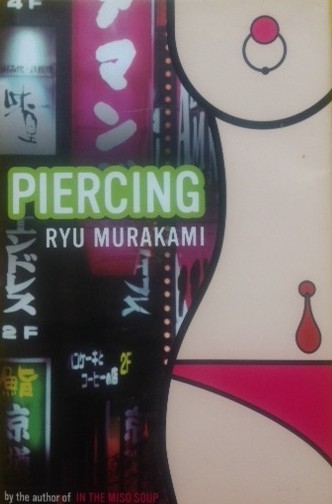Inspiring Older Readers
 posted on 06 Oct 2020
posted on 06 Oct 2020
Piercing by Ryu Murakami
In the still of night Kawashima stands over the cot of his baby daughter and watches while his wife sleeps nearby in their bed. But given this is the opening of a book by Ryu Murakami (no relation of Haruki), this isn’t a picture of the simple infatuated innocence of the new father – something much darker is going on here. In fact, Kawashima has in his hand an ice-pick ( of the kind used to such brutal effect in the film Fatal Attraction) that he holds poised over the soft pliant skin of the infant.
It turns out that behind Kawashima’s veneer of normality lurks a broiling, conflicted mass of pent-up obsessive tension. His hidden past is in fact a bit of nightmare in which a relationship with an older woman ended with him piercing her abdomen with the said ice-pick. And now the desire to pierce female flesh again dominates his unspoken thoughts and aspirations.
Deciding that the only way to ensure the safety of his daughter is to act out his increasingly dominant fantasy of using the ice-pick again, he meticulously plans a meeting with an S&M prostitute who he will kill. Chris Petit, reviewing the book in The Guardian back in 2007 notes:
“Kawashima turns out to inhabit a state beyond misogyny, perhaps best described as anti-gynaecological, manifesting itself as a deep fear of domesticity, personified by a wholesome wife who teaches baking and pastry-making, infusing the home with a buttery smell of happiness.”
Kawashima takes advantage of the chance of a sabbatical to leave his family for a while and in that time he plans to put his step-by-step plan into action. But it is at this moment that things start to go badly wrong for him and the book takes on an almost farcical, black comic aspect. What Kawashima hadn’t bargained for is that the young woman sent to his anonymous hotel room by the S&M agency just happens to have emotional and mental health problems that are the equal of, or worse than, his own. The good people at Kirkus put it this way when reviewing the book on its release:
“ When Chiaki arrives, she turns out to have her own history of molestation by her father and less-than-wholesome attachments to the drug Halcion, nipple rings and self-mutilation. Promptly stabbing herself in the thigh, Chiaki misconstrues Kawashima’s interest in her and further complicates their grisly pas de deux. Not only is she a “kindred spirit” in suffering, but she also shares his high threshold for pain, boundless rage and uncontrollable flashbacks. “
Of course I’m not going to reveal here just how the whole thing plays out but let’s just say that it wouldn’t be out of place in a Quentin Tarentino movie.
What is certainly true is that Murakami is fearless in burrowing into the very darkest corners of the damaged psyche and coming out the other side with a smile on his face. But it’s a smile of knowingness and not amusement; a smile that says he understands that the human comedy is a demeaning farce.
Truthfully, don’t read this book if you’re squeamish or if you’re turned-off by frank violence and bodily detail – unless you’re prepared to try living dangerously. But if you fancy a walk on the wild side, paperback copies aren’t scarily expensive and you might even pick up a hardback cheap enough on the second hand market.
Terry Potter
October 2020